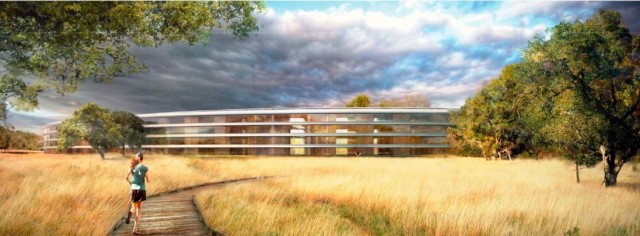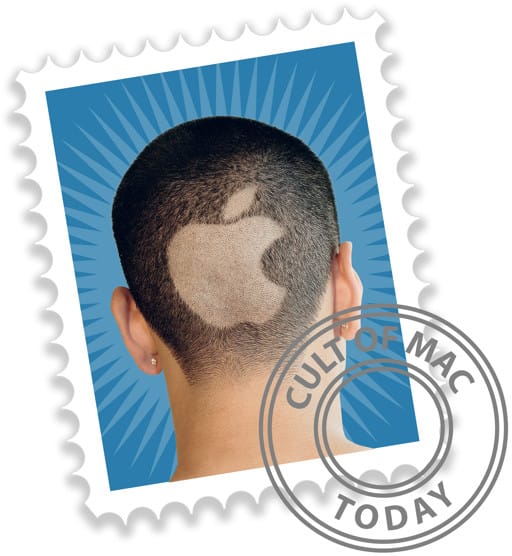The Apple Campus 2 project has received its fair share of criticism, and the complaints run the gamut: some small and petty, some erudite and long-winded, and still others self-aware.
The traffic is going to get too heavy. The bike lanes are going to go away. The pollution will be too high. All in all, complainants say, there goes the neighborhood!
A couple of weeks ago, the Cupertino City Council approved the massive Apple Campus 2 project after a long meeting that included final environmental impact studies and overwhelmingly positive live public comment, lots of it from local business owners, like the one who owns a coffee shop and hopes to sell lattes to the thousands of workers headed off to Apple’s proposed new campus.
Not everyone is super happy about the mega-campus coming to small-town Cupertino and its surrounding bedroom communities. Many of the concerns deal with the already slow-as-a-modem Silicon Valley traffic, others are about designs of the campus that effectively cordon off the tech giant from regular residents.
A New Look
Sunnyvale resident Yair Barniv is really upset that his residential neighborhood will be disrupted in character.
“I STRONGLY object to Apple’s plans affecting my Sunnyvale neighborhood!!!” he shouted in a public comment email.
“I don’t want them to convert my quiet Sunnyvale residential area into—effectively—an Industrial area! Playing with words isn’t going to change reality. I chose to live in a RESIDENTIAL area—not in an INDUSTRIAL one!”
Other residents echo similar sentiments, all accessible on the Cupertino City Council website, archived as part of the public comment process.
Another Sunnyvale resident, Stephen Rohde, is concerned about the median planned to run down Homestead Road, near the building site.
“Now, a tree line median may look nice,” he writes, “but did anyone consider the inconvenience to the Sunnyvale homeowners being able to get in or out of their own driveways? It you want to head east toward Lawrence Expressway you would have to go up to Wolfe to make the U-turn. And each time to turn into your driveway you would have to go down to Tantau to make the U-turn. This is absurd, and I am totally opposed to removing the turn lanes.”

Traffic Woes
There are pages upon pages of concerns of increased and re-routed traffic in the public comment section, and even some proposed alternatives.
Cupertino resident Wahila Wilkie writes, “As mitigation for the traffic issue I suggest having Apple pay for electric school buses to serve all schools in the affected areas to reduce the number of cars on Wolfe and Tantau and compensate for the increased air pollution from addition Apple commuters.”
Robert Neff from Palo Alto worries about bike lanes along streets Tantau and Pruneridge, which he uses to commute to work daily. His concern is that the bike lane allows cyclists to cross the busy 280 freeway without an interchange.
“The plan suggests removing bike lanes where Tantau crosses Calabazas Creek,” writes Neff, “replacing them with a shared bike/ped facility at that point. This is a bad idea, and a definite downgrade for the bike facility.”
Healthcare Matters
Still other residents worry about potential issues to local healthcare facilities. One anonymous poster, known only as Ann, wrote a letter to express her concern for the potential air quality issues resulting from construction of the facility, as well as its operation soon after.
“Which way would prevailing winds blow that excess emission,” she asked, “i.e. toward the Hospital or towards Cupertino High School or towards Birdland or Portal neighborhoods?”
Similarly, Ann wants the council to consider the impact the extra traffic might have on, say, a vehicle attempting to get to the emergency room during peak traffic hours. “Already Homestead frequently experiences gridlock,” she said. “What would be the extra time required to arrive at Kaiser starting from the intersection of Homestead/Hollenbeck? What would be the extra time required starting from Wolfe/Iris? These inquiries should be modeled explicitly.”
Apple Creates Jobs
All of these concerns are valid, of course, as a project of this size can in no way fail to disrupt the lives of the people that live nearby.
Berkely economics professor Enrico Moretti, however, feels that there is an upside to such a large undertaking.
Moretti is the author of “The New Geography of Jobs,” a book about the positive impact gentrification and development can have on communities.
“I think Apple in Cupertino brings jobs and salaries to the local community outside the constructive workforce,” he told Cult of Mac in a phone interview. “By my own estimate, one job in a high tech company can support five local services in the same metropolitan area–jobs outside the company.”
Moretti says that a company like Apple brings both specialized positions like IP lawyers to the community, as well as more generalized jobs, like taxi drivers and cafe workers.
The professor is excited about the new Apple campus, saying that the proposed Apple Campus 2 “fits in with the Apple vision of environmental responsibility.”
Moretti believes that the rooftop solar panels and other environmental features are the most positive feature of the new campus. “Frankly,” he said, “it’s going to be an improvement over what is there now.”
The issue Moretti has concerns about, however, have more to do with the disconnect of the campus from the local community.
“I’m a little surprised they are so isolated,” he said. “I don’ t think they’re thinking of the future. The more modern approach to corporate integrated with the city, can actually walk outside and go to local shops, restaurants, etc.”
That’s not to say the old Cupertino campus is integrated, either, but Moretti feels like current and future employees in the high tech sector will continue to ask for more connected work places. “You see this need for a better connection with the local community,” he said. “They are all demanding campuses that are downtown, near stores, walking environments.”
Bottom line, the Apple Campus 2 is getting built. It’s on delayed schedule to finish up by 2016, so any concerns the residents may have will play out during the construction and beyond. If Moretti is correct, though, the city should see more benefit than cost as Apple brings in more jobs and more income to the local area.




